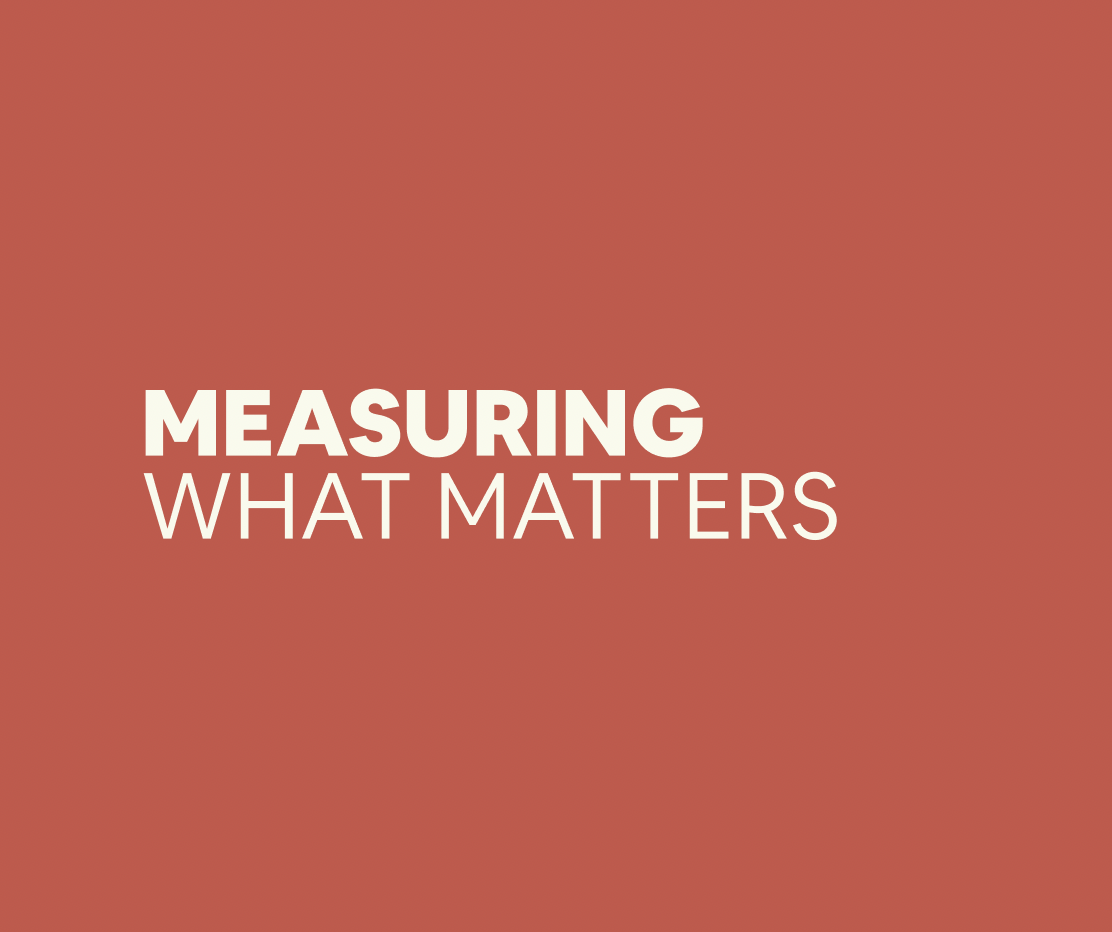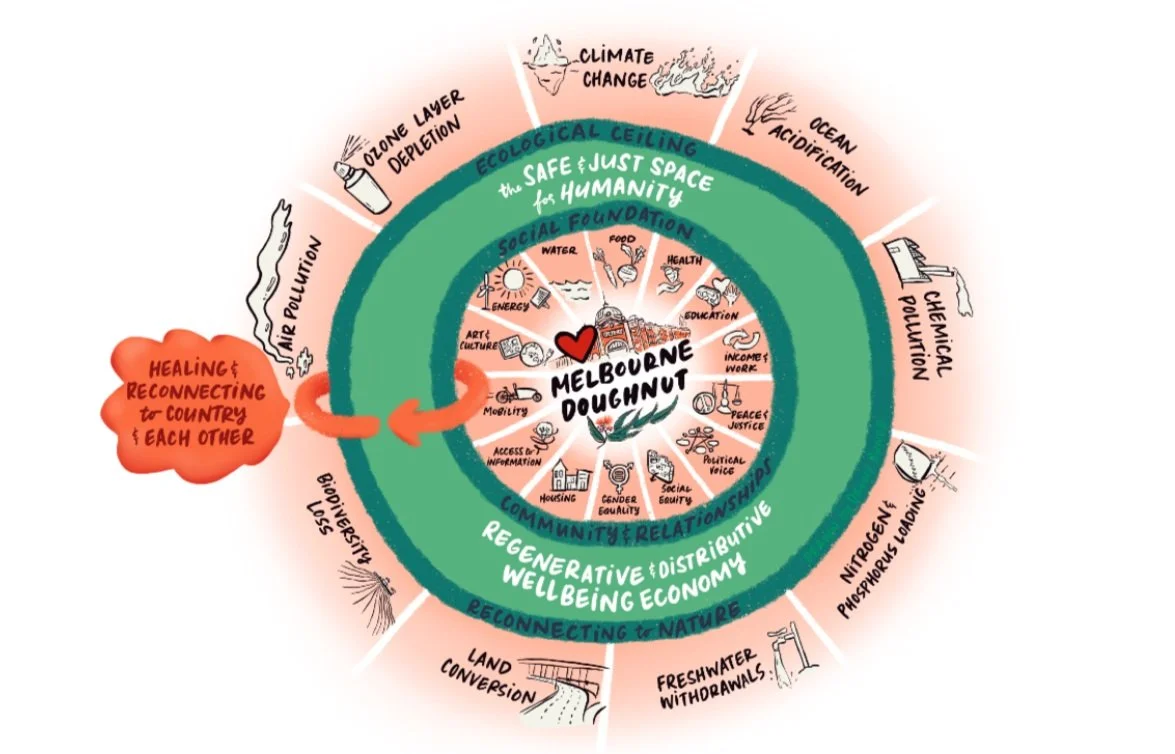Measuring
What Matters
MEASURING WHAT MATTERS IN PARTNERSHIP WITH:
Anchor partners:
RM Lab Research Council
Lord Mayor’s Charitable Foundation
RMIT
Altiorem
Arup
Centre for Policy Development
City of Melbourne
ERM
Fireside Agency
Open Corridor
Think Impact
Collaboration partners:
The hundreds of individuals and organisations who have contributed to research and content development so far.
-
WHAT IS IT & WHY
Current modes of measuring progress tend to focus on growth as the primary goal and ineffectively capture the extent and integrated nature of our social, economic and climate challenges. In addition, these modes focus heavily on numbers without meaningfully grounding these figures in the stories of the communities they describe. As a result, too often, efforts to improve social outcomes generate negative consequences for the environment or perpetuate inequity across Greater Melbourne.
Measuring What Matters is a pathway designed to build our understanding of the city’s progress as a whole. Applying both quantitative data and storytelling, Measuring What Matters describes the social and ecological elements that comprise our city system and the relationship among them. It explores the levers we have to effect change - such as policy and investment - and the extent to which these are currently directing us towards the safe and just space for humanity. Over time, Measuring What Matters is intended to serve as a resource to support holistic decision-making that centres positive outcomes for both people and planet, locally and globally.
The core of Measuring What Matters is the development of a City Portrait for Greater Melbourne. Drawing on approaches taken by cities across the world, the City Portrait will begin with a snapshot of greater Melbourne’s current performance in relation to the dimensions that make up the Melbourne Doughnut’s social foundation and ecological ceiling. It will bring these together to begin to describe the city as a system and identify current actions that are responding to some of our greatest social and ecological challenges.
Why this matters:
“This is our chance to take stock, draw breath and turn the ship around”
- Professor Lauren RickardsCurrent phase:
Action -
THE STORY SO FAR
Over a six-month period in 2020 - 2021, community-based research explored the possibility of applying Doughnut Economics in greater Melbourne. This work culminated in Towards a Regenerative Melbourne, which included a vision for our city and the Melbourne Doughnut as a compass. Describing what a thriving Melbourne could be, these elements formed an initial, qualitative City Portrait for our city.
In 2022, we began to develop City Portrait 2.0, engaging with members of our alliance and experts from academia, government and practice to define outcomes and quantitative metrics associated with each dimension of the Melbourne Doughnut. These include the social foundation (Doughnut interior) and planetary boundaries (Doughnut exterior).
In 2023, we are bringing together this data into a complete City Portrait and narrative about the city as a system, including where it is performing well, or requires more attention, in relation to the ultimate goal of a ‘safe and just space for humanity’.
-
WHO & HOW
Lead Convenor:
Alison WhittenHow to get involved:
Email Alison@regen.melbourne to find out more about the initiative.
Keep an eye on our upcoming events to get involved.If you are an organisation working toward a thriving future for Melbourne, join the alliance to help co-create pathways of action across our city.
and be sure to join the alliance to stay up to date on newsletters and project announcements.









![[recording] A city portrait for Melbourne](https://images.squarespace-cdn.com/content/v1/64251f00583fb50462a22eeb/1682504090604-AXEMZWH9BRPAASB4EWLY/Screen+Shot+2023-04-26+at+7.06.08+pm.png)

